#history of archaeology
Text
What happened in archaeology during the 20th century? - Part 2
As mentioned in the previous article, during the time before 1960 in the 20th century, the focus was on methodological improvements in archaeology. From 1960 on, the focus was on theoretical improvements in archaeology. This does not mean that the 1960s marked a clear line between methodological and theoretical development in archaeology. This means the majority of events and concerns in the discipline were slightly different before and after 1960.
What happened in archaeology after 1960s?
From 1960 on, archaeology transformed into a new version of itself. We refer to it as “New Archaeology”. So, the birth of new archaeology is the main thing that happened in archaeology after 1960.
What is New Archaeology?
In new archaeology, the main focus is on studying the cultural processes of past human societies. As you may remember, in the background era of archaeology, the focus was to discover the legendary cities of the past. In the Renaissance era, the focus was to collect antiquities and study the history of antiquity. Then, in the 19th century, the focus was on studying the history of humans and their culture. Again, in the 20th century before 1960, the focus was the same. Then, only after 1960, scholars started to study how human cultures were born, evolved, and changed.
In simple words, before this new archaeology, what archaeologists studied were random and independent events in the past related to humans. But with new archaeology, they studied how those events in history connected with each other. They studied how both intentional and accidental acts of human ancestors have shaped their culture. How did the things that past humans did as well as the things that happened to past humans shape the cultures of past humans? They examined. So, as archaeologists focused on this process of birth and evolution of cultures, we call this processual archaeology.
Read full article on New Archaeology: Processual Archaeology at kamalsjournal.com
Other than the birth of New Archaeology, there were a few important events and trends that occurred after the 1960s, as listed below:
Scholars like Lewis Binford introduced new theories that resulted the emergence of new archaeology
Gordon Childe had introduced his theory of the Neolithic Revolution, explaining how human ancestors domesticated animals and plants. He said that after the domestication of animals and plants, establishing settlements and making pottery took place in order. Archaeology became the scientific discipline to test these theories.
The extensive use of technology to analyse and interpret data
Studies transformed into problem-oriented studies. Scholars began to conduct studies to find answers to research questions.
The studies focused on providing more rational conclusions than ever.
Archaeologists introduced Rescue archaeology, or salvage archaeology, to save archaeological monuments and sites as warfare and development projects were causing huge destruction to them Soon, Archaeological Impact assessments became a necessity before development projects.
In 1970, scholars introduced cultural resource management to protect valuable archaeological sites and monuments. Then, they introduced archaeological heritage management and cultural heritage management too.
So, the new archaeology is an upgrade of archaeology that emerged in the 1960s with better theories and methods, focusing on studying the cultural processes of the human past through material data.
What Happened in Archaeology After 1980?
After 1980, the new archaeology was questioned, and a new version emerged, named post-processual archaeology. Scholars like Ian Hodder introduced new theories for archaeology. This age was literally a period of theoretical reform in archaeology. In order to understand archaeology in this age, the characteristics of new archaeology and post-processual archaeology can be compared.
The new archaeology focused on quantitative results. Post-processual archaeology focused on qualitative results.
The new archaeology was pessimistic. Post-processual archaeology was optimistic. In new archaeology, it was believed that past human cultures were never able to be reconstructed with the limited data found in archaeology. In post-processual archaeology, the approach was optimistic regarding the matter.
New archaeology focused on the processes that were behind creating antiquities. Post-processual archaeology focuses on the culture behind antiquities.
The new archaeology focused on explaining past landscapes as cultural processes. Post-processual archaeology focuses on cultural or cognitive aspects of past human beings.
New archaeology considered that past incidents happened that way because of external factors such as environmental conditions, and things only changed when the environment changed. But post-processual archaeology considers the choices made by humans in the formation of history.
New archaeology looked into the past from the same point of view as we look into the present. But post-processual archaeology looked at the past from different perspectives.
New archaeology tried to understand the past as patterns of social, economic, and political anomalies, but post-processual archaeology tries to understand the past as a collection of individual anomalies. As an example, in new archaeology, it will be said that the Stone Age is followed by the Bronze Age, and the Bronze Age is followed by the Iron Age as a pattern, with some minor exceptions, due to the nature of the impact from the environment. But, in post-processual archaeology, it will be specific with the place and time where and when the Stone Age was followed by which, either bronze, copper, or iron, considering the individuality of incidents and trends that occurred in the history of mankind due to the cognition of mankind, not the environment.
Read full article on Post-Processual Archaeology at kamalsjournal.com
Summary
As discussed above, the discipline of archaeology, which had already emerged in the 19th century, was developed further as a science in the 20th century. In the first six decades of the 20th century, the use of technology extensively developed archaeology as a science in practical ways, such as chemical dating methods.
Then, in the 1960s, the theoretical evolution of archaeology took place. Rather than explaining the story behind antiquities, the past human cultural process was studied with the use of antiquities, marking the first origin of the form of archaeology we have today, which is ‘studying through material data’. And also, archaeological heritage management was introduced to have standards for dealing with archaeologically important heritage.
Then, in the 1980s, with post-processual archaeology, the approach to archaeological studies changed. Earlier, mankind’s cognition was neglected when recreating the past through material remains. There, the environment was considered the force of evolution. Simply put, it said that human culture had changed due to environmental changes. But, in post-processual archaeology, it was said that human culture changed mainly due to the intelligence humans had. As humans, we could choose whatever we wanted with our intelligence. Further, it emphasised that the past is not a pattern but a collection of various occurrences that happened at various times and in various places individually.
As of today, the archaeology we refer to is this post-processual archaeology. So, this is the long process of the origin of archaeology. However, there is an ongoing, never-ending debate about processual archaeology vs. post-processual archaeology.
At this point, if you read all seven articles, I am sure you probably get the same image in your head as I do when I hear “History of Archaeology”. And now, most probably, you have your own idea of the origin of archaeology too.
#archaeoblr#archaeology#archaeologist#archaeology for all#archaeology student#origin of archaeology#history of archaeology#20th century archaeology#archaeology in the 20th century#archaeology in the 60s#archaeology in the 80s#new archaeology#processual archaeology#post-processual archaeology#kamalsjournal#chanakakamal#empowering curiosity#inspiring understanding#sharing knowledge#academic blog
2 notes
·
View notes
Text
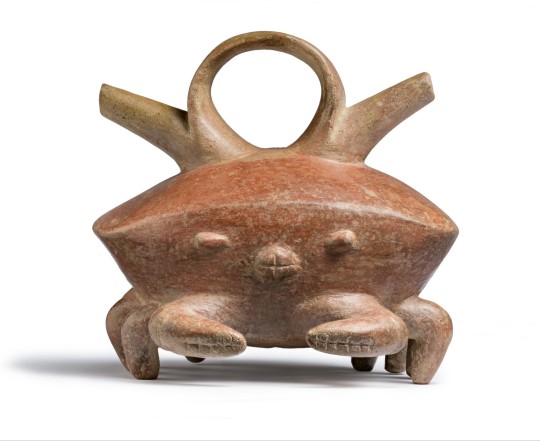

~ Crab Vessel with Double Spout.
Place of origin: Colombia, Calima Region
Period: Ilama Period
Date: 1500 B.C.-A.D. 100
Medium: Ceramics
#ancient#ancient art#history#museum#archeology#ancient history#archaeology#ancient pottery#pottery#south america#crab#crab vessel#calima#Colombia#pre columbian#Ilama Period#1500 b.c.#a.d. 100
16K notes
·
View notes
Text
A murder mystery film set in a medieval village. After an outbreak of plague, the villagers make the decision to shut their borders so as to protect the disease from spreading (see the real life case of the village of Eyam). As the disease decimates the population, however, some bodies start showing up that very obviously were not killed by plague.
Since nobody has been in or out since the outbreak began, the killer has to be somebody in the local community.
The village constable (who is essentially just Some Guy, because being a medieval constable was a bit like getting jury duty, if jury duty gave you the power to arrest people) struggles to investigate the crime without exposing himself to the disease, and to maintain order as the plague-stricken villagers begin to turn on each other.
The killer strikes repeatedly, seemingly taking advantage of the empty streets and forced isolation to strike without witnesses. As with any other murder mystery, the audience is given exactly the same information to solve the crime as the detective.
Except, that is, whenever another character is killed, at which point we cut to the present day where said character's remains are being carefully examined by a team of modern archaeologists and historians who are also trying to figure out why so many of the people in this plague-pit died from blunt force trauma.
The archaeologists and historians, btw, are real experts who haven't been allowed to read the script. The filmmakers just give them a model of the victim's remains, along with some artefacts, and they have to treat it like a real case and give their real opinion on how they think this person died.
We then cut back to the past, where the constable is trying to do the same thing. Unlike the archaeologists, he doesn't have the advantage of modern tech and medical knowledge to examine the body, but he does have a more complete crime scene (since certain clues obviously wouldn't survive to be dug up in the modern day) and personal knowledge from having probably known the victim.
The audience then gets a more complete picture than either group, and an insight into both the strengths and limits of modern archaeology, explaining what we can and can't learn from studying a person's remains.
At the end of the film, after the killer is revealed and the main plot is resolved, we then get to see the archaeologists get shown the actual scenes where their 'victims' were killed, so they can see how well their conclusions match up with what 'really' happened.
#film ideas#plotbunny#murder mystery#detective stories#period dramas#middle ages#history#archaeology
19K notes
·
View notes
Photo

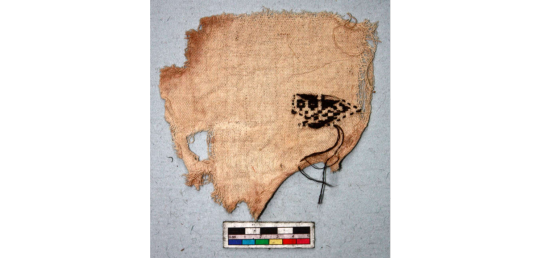
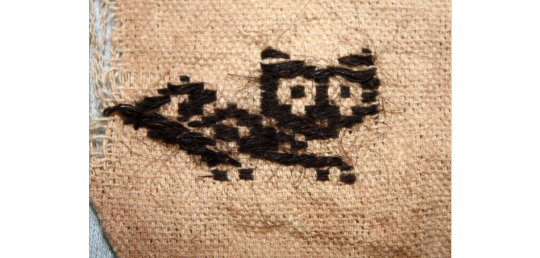
textile
Cultures/periods: Chimu (?) Chancay (?)
Production date: 900-1430
Made in: Peru
Provenience unknown, possibly looted
Textile fragment; cotton plain weave ground with paired warps; camelid supplementary weft patterning; feline figure; cream and black.
British Museum
25K notes
·
View notes
Text

2,300-Year-Old Plush Bird from the Altai Mountains of Siberia (c.400-300 BCE): crafted with a felt body and reindeer-fur stuffing, all of which remains intact
This artifact was sealed within the frozen barrows of Pazyryk, Siberia, for more than two millennia, where a unique microclimate enabled it to be preserved. The permafrost ice lense formation that runs below the barrows provided an insulating layer, preventing the soil from heating during the summer and allowing it to quickly freeze during the winter; these conditions produced a separate microclimate within the stone walls of the barrows themselves, thereby aiding in the preservation of the artifacts inside.
This is just one of the many well-preserved artifacts that have been found at Pazyryk. These artifacts are attributed to the Scythian/Altaic cultures.
Currently housed at the Hermitage Museum.
#archaeology#anthropology#history#artifact#artifacts#siberia#scythians#archeology#museum#amazing#interesting#stuffed animals#ancient history#prehistoric#crafting#felt art#art#prehistoric art#hermitage museum#human nature
45K notes
·
View notes
Text
Peruvian whistling vessels simulating animal calls (some of the oldest found date to c. 500–300 BCE)
#Peru#Peruvian#whistling vessels#animal vessels#archaeology#history#ceramics#Inca#Incan#art#sculpture#animal calls
20K notes
·
View notes
Text


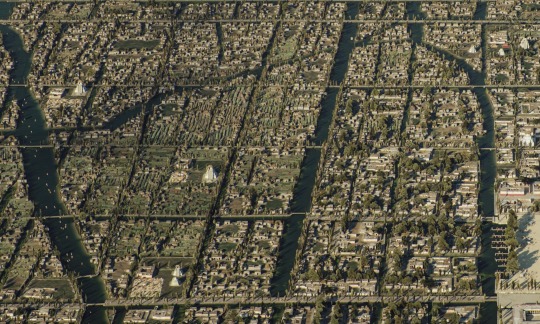
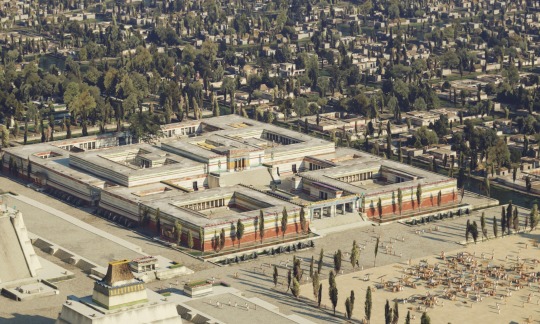

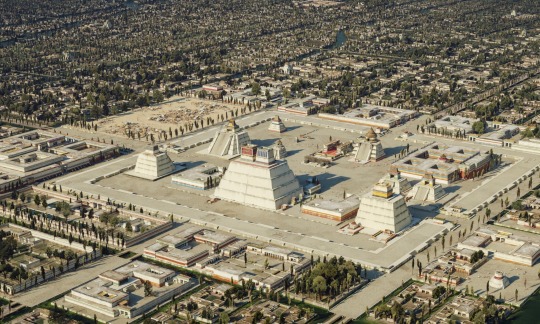
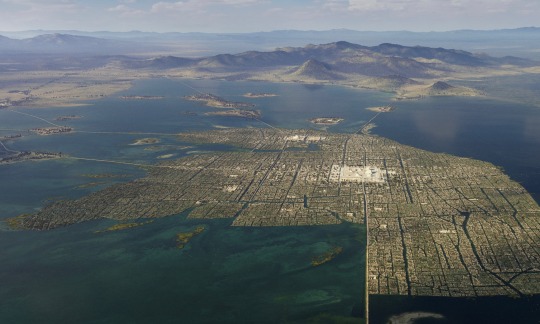
3D Reconstruction of Tenochtitlán by Thomas Kole
#history#art#mesoamerica#archaeology#antiquities#mexico#aztec#indigenous#indigenous history#precolumbian#precolumbian art#tenochtitlan#my posts
9K notes
·
View notes
Text

Demeter, goddess of fertility and the harvest, an image likely based off of a Roman original. (Updated description due to deeper research!!)
After doing digging this image is not in fact from the temple of Eleusis but is rather a modern version of a (possibly) Roman relief of a similar kind!
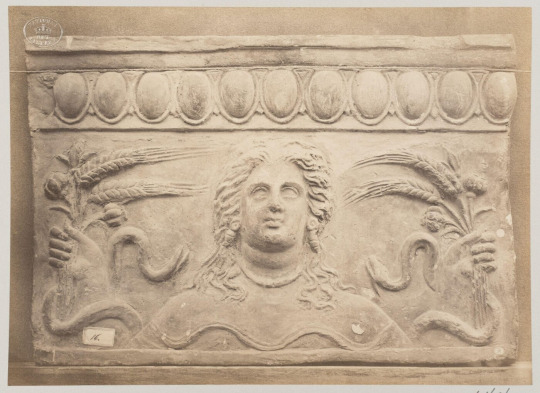
The image which likely served as the basis for the modern one, photograph taken in 1864. Image source
Right now it's really unknown where this original relief came from as there's little to no information from the museum listing I found this on, but I will continue to update this as time goes on if I find more info. For anyone else, feel free to update and reblog if you find more info before I do!
UPDATE: original image source has been found for the Roman relief, it is located at the Lourve! Source
#demeter#goddess#theoi#theoi worship#greek polytheism#hellenic pagan#hellenic polytheism#archaeology#history#greek mythology#paganblr
4K notes
·
View notes
Text
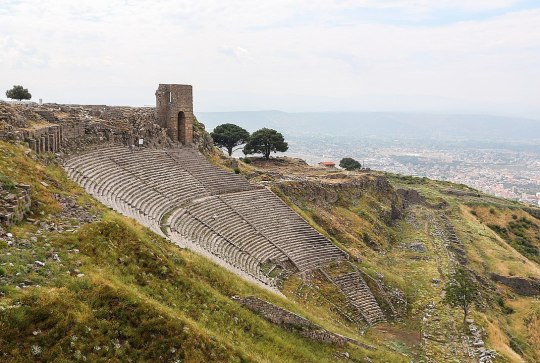
The Hellenistic Theater of Pergamon, Bergama, Turkey.
2K notes
·
View notes
Text
The True History of the Origin of Archaeology
Have you ever wondered about the origin of archaeology? Did you find an adequate answer to it? Or are you still seeking a satisfying answer? Or do you wonder whether what you read was the truth? Well, you will find all of the answers and clear all of your doubts about the origin of archaeology. Take 4 minutes and read! A simple and factual article is ahead.
Introduction to the history of archaeology
Archaeology's history is not a single straight line on a timeline. It does not have a specific time of origin. Hence, it has not developed from a point in time to the present day. There have been multiple points in the past that caused its emergence. If the discipline we refer to as Archaeology today is a tree, the subfields of archaeology are the branches grown out of the trunk, and the history of archaeology is the root system that spreads into the earth below the trunk.
Hence, the origin of archaeology is not a single phenomenon. The origin of archaeology was a chain of phenomena, a process. It is a gradually emerging field of interest.
According to the nature of the chain of events, there are four phases in the history of archaeology.
The background era of archaeology
Archaeology in the Renaissance era
Archaeology in the 19th century AD
Archaeology in the 20th century AD
The Background Era of Archaeology
The background era of archaeology is marked by the age when mankind was curious about the past. Their curiosity was shown in two ways. One is that they wondered what they would find in their surroundings that existed even before they were born. The other was the undying desire to know their own histories.
The curiosity and enthusiasm about the monuments and other physical remains they found that seemed to be left from the past led them to discover those things. They created legends and tales around those material remains, connecting them to the people who lived in the past. And, as those stories became popular and passed from generation to generation, they wanted to examine if the legends were true.
Accordingly, the king Nabonidus in Babylonia excavated a site and discovered monuments. He assigned them to the people who lived before the babies. That marked the first ever recorded incident of excavating to reveal the past and interpreting the uncovered items.
So, during this background era, there was no such thing as archaeology. But the thinking and the passion behind archaeology were gradually rising.
Read more...
Archaeology in the Renaissance Era
The Renaissance era was the first age when the term archaeology came into use. So, obviously, this is the first era of the history of archaeology as far as the term archaeology is concerned. But as mentioned earlier, there was a background era too. During this era, enthusiasm for the material things left from the past rose rapidly. So, the word antiquity came in to name those ancient items. People, especially the elites, showed interest in antiquity and started collecting it as much as possible. They considered the antiquities to be art. They looted everything they found valuable as art and displayed it in cabinets to show their elegance. That is called antiquarianism. This antiquarianism undermined the idea of a past related to those material remains.
Then, as time passed, antiquarian societies were established. They brought back enthusiasm for studying the past through antiques. And soon people understood that looting caused damage to the antiquities. So they invented new ways to unearth them. And they continued displaying them in cabinets.
Accordingly, the desire for the past and the desire for material remains that come from the past developed in this era. and the practise of digging the earth to recover the antiques came into practise, as did the methods to do so.
Read more...
Archaeology in the 19th Century
In the 19th century, archaeology developed into a scientific discipline on the foundation laid by the Renaissance. During the Renaissance, the sciences began to expand, unlike before. That continued until the 19th century and even today. With this background, archaeology was also sophisticated as a field of study. Additionally, the rise of other fields also had an enormous impact on archaeology's evolution in the 19th century. Those evolutions took place due to the following factors:
the development of geology as a discipline
the emergence of studies of human evolution
the emergence of prehistoric archaeology
the priority in studies for ancient civilizations
the consequences of antiquarianism
The development of systematic chronology in archaeology
the contribution of Pitt Rivers, Flinders Petrie, and Mortimer Wheeler
Read more...
Archaeology in the 20th Century
In the 20th century, archaeology marked a new chapter in its evolutionary development. As said earlier, it emerged as a scientific discipline in the 19th century. Here, its vast development took place in three phases.
the time before 1960,
the time of New Archaeology after 1960 till 1980,
the time of Post-processual Archaeology after 1980.
During the time before the 1960s, it was almost a continuation of what happened in the last century. Additionally, the use of technology has extensively developed archaeology as a science in practical ways, such as the use of electronics and chemical dating methods. Later periods were more likely to deal with theoretical improvements.
The time period between 1960 to 1980 marked a revolutionary progress in archaeology.These two decades were about the theoretical evolution of archaeology. Instead of explaining the story behind antiquities, archaeologists started to explain the cultural processes of past human history. It is called new archaeology. Simply put, their purpose in studying archaeology was to find explanations for what happened and why it happened in human culture in the past. Studying the past human culture through material remains marked the emergence of the first version of the archaeology we have today. Additionally, the archaeologically important material remains was started to be considered as heritage and in that case, archaeological heritage management was born.
During the 1980s, new archaeology was criticised. In new archaeology was also called processual archaeology as the cultural process was studied. Here, in the 1980s, another new version of archaeology was developed as post-processual archaeology. Instead of studying the past human cultural process and interpreting everything happened in human culture as resulted from environmental factors, scholars began to consider the cognition of past humans. They started to reveal the intelligence behind human activities and behaviour. And also, they emphasised that the past is not a pattern but a collection of various occurrences. Occurrences that happened at various times and in various places individually.
Read more...
Conclusion
Archaeology, the field of study as we know it today, did not originate at a specific point in time. It has gradually emerged in the history of time, as a field of interest, then a field of study, then a scientific discipline.
Originally posted on kamalsjournal.com
#archaeology#sharing knowledge#origin of archaeology#history of archaeology#archaeology student#archaeoblr#archaeologist#education#easy to read#human history#empowering curiosity#curiosity#understanding#knowledge#made easy#beginners#archaeology for all
0 notes
Text

Assyrian alabaster relief of an Eagle-Headed Winged Figure from the ancient city of Nimrud, dating back to the 9th century BCE. The Pergamon Museum, Berlin, GERMANY.
Photo by Babylon Chronicle
2K notes
·
View notes
Text

~ Eccentric Flint in the Form of a Scorpion.
Place of origin: Belize, Guatemala, Honduras, or Mexico (Mesoamerica)
Culture: Maya
Date: A.D. 600–900
Medium: Stone, Chert
#7th century#10th century#flint#eccentric flint#scorpion#mesoamerica#maya#mexico#belize#guatemala#honduras#stone#chert#a.d. 600#a.d. 900#history#museum#archeology#archaeology
5K notes
·
View notes
Text

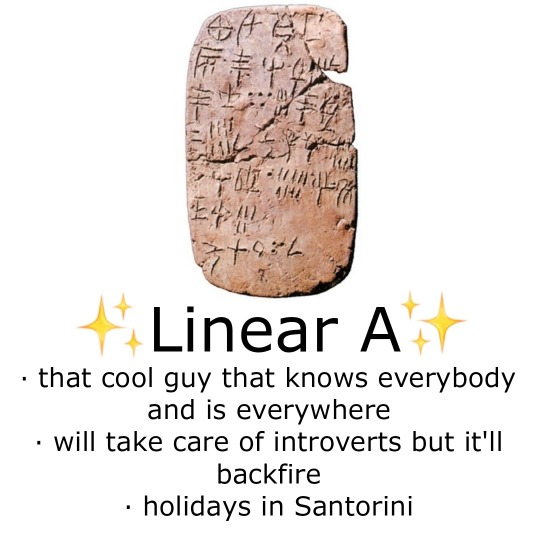


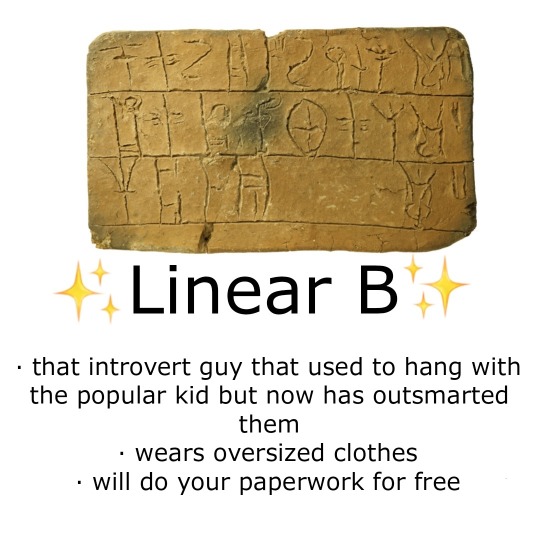


✨ tag yourself ✨ but with Aegean Scripts! Mainly Bronze Age, with a sprinkle of Iron Age (Cypriot Syllabary).
#tagamemnon#ancient greece#crete#minoan#scripture#history#classics#bronze age#cretan hieroglyphic#linear a#phaistos disc#linear b#cyprominoan#cypriot Syllabary#arkalochori axe#archaeology#tag yourself
3K notes
·
View notes
Text
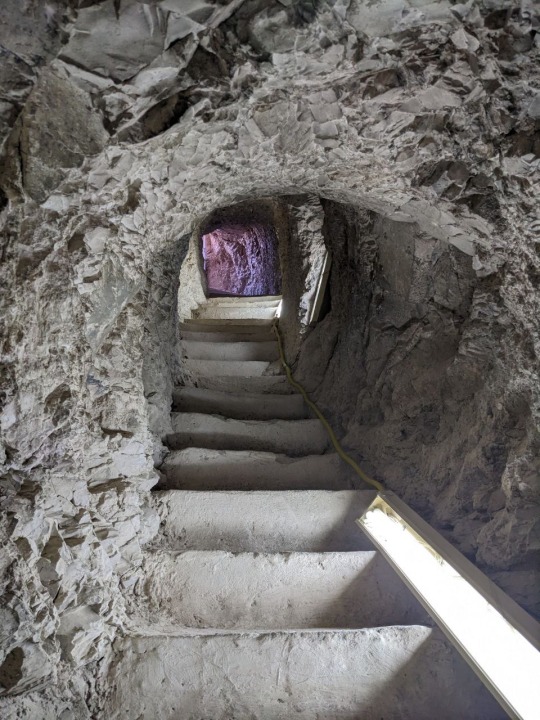
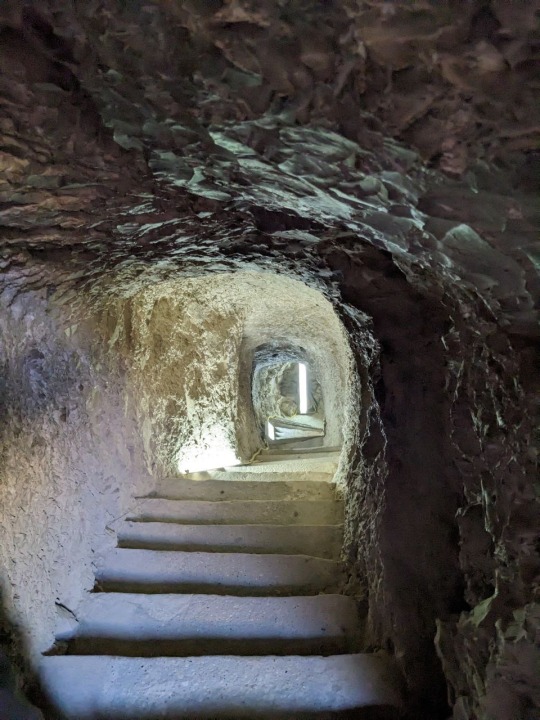

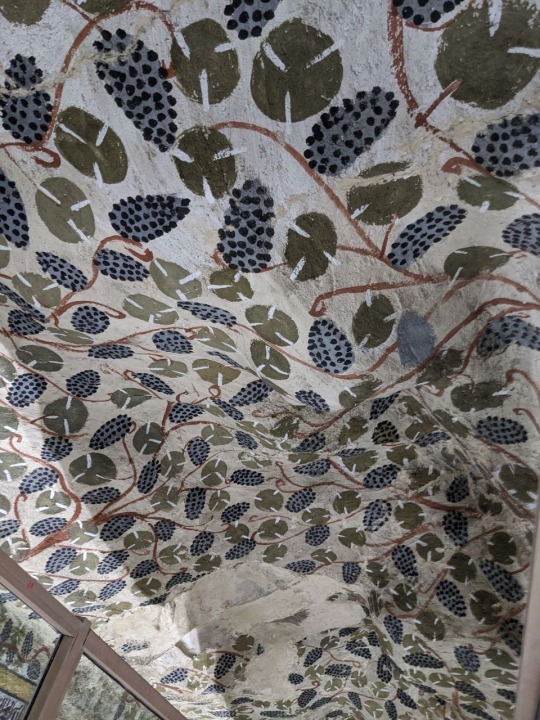


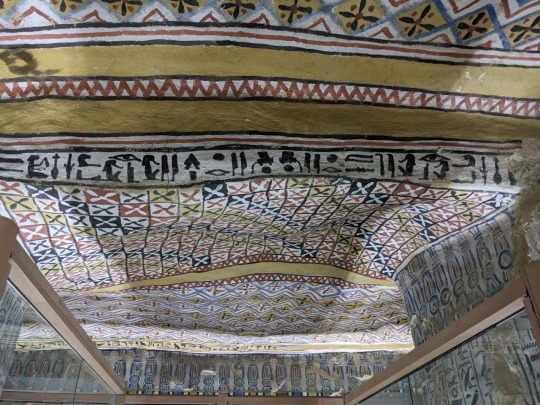
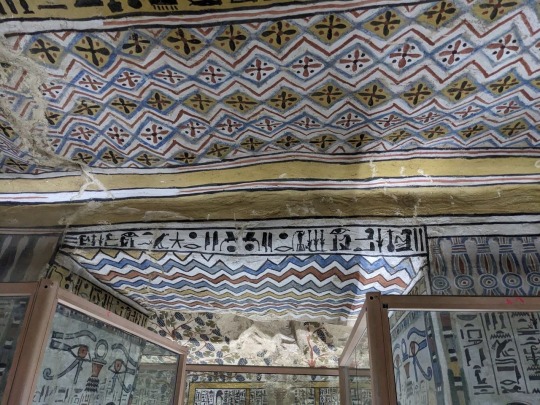
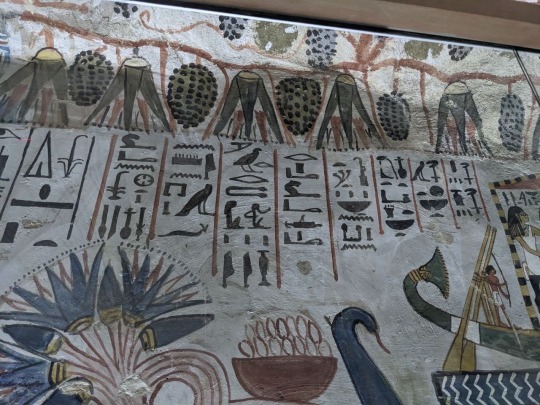

Ceiling and imagery of the Tomb of the Vineyards, burial of Sennefer, Mayor of the Southern City, Thebes, during the 18th dynasty of Egypt.
Photos taken by me, August 2023
It’s hard to tell which way is up and down when walking through the tunnel leading from the surface into the tomb. Before entering the main chamber there is a small antechamber whose ceiling is quite low, and then a shallow arch which leads to the main room depicted in the above photographs. Both chambers contain a good deal of paintings, however the main chamber holds the most numerous and well preserved paintings, of course. Besides the ceiling, everything is encased in glass.
#ancient egypt#egyptian mythology#egyptian hieroglyphs#egyptian art#ancient history#egyptian gods#egyptology#hieroglyphs#archaeology#egyptian history#egypt
2K notes
·
View notes
Text
Emerald Spectacles from India, c. 1620-1660 CE: the lenses of these spectacles were cut from a single 300-carat emerald, and it was believed that they possessed mystical properties

These eyeglasses are also known by the name "Astaneh-e ferdaws," meaning "Gate of Paradise," based on the perception of the color green as a symbol for spiritual salvation/Paradise. This was a common belief in Mughal-era India, where the spectacles were made.

The lenses were crafted from two thin slices of the same emerald. Together, the lenses have a combined weight of about 27 carats, but given the precision, size, and shape of each lens, experts believe that the original emerald likely weighed in excess of 300 carats (more than sixty grams) before it was cleaved down in order to produce the lenses. The emerald was sourced from a mine in Muzo, Colombia, and it was then transported across the Atlantic by Spanish or Portuguese merchants.
Each lens is encircled by a series of rose-cut diamonds, which run along an ornate frame made of gold and silver. The diamond-studded frame was added in the 1890s, when the original prince-nez design was fitted with more modern frames.
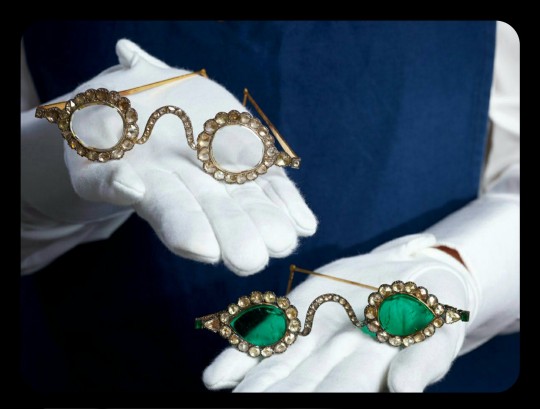
The emerald eyeglasses have long been paired with a second set of spectacles, and they were almost certainly commissioned by the same patron. This second pair is known as Halqeh-e nur, or the "Halo of Light."
The Halo of Light features lenses that were made from slices of diamond. The diamond lenses were cleaved from a single stone, just like the emerald lenses, with the diamond itself being sourced from a mine in Southern India. It's estimated that the original, uncut diamond would have weighed about 200-300 carats, which would make it one of the largest uncut diamonds ever found.

These lenses are so clear and so smoothly cut that it sometimes looks like they're not even there
Both sets of spectacles date back to the mid-1600s, and it's generally believed that they were commissioned by a Mughal emperor or prince. The identity of that person is still a bit of a mystery, but it has been widely speculated that the patron was Shah Jahan -- the Mughal ruler who famously commissioned the Taj Mahal after the death of his wife, Mumtaz Mahal. Shah Jahan did rule as the Mughal emperor from about 1628 to 1658.
The emerald and diamond lenses may have been chosen for symbolic/cultural reasons, or they may have been chosen simply because they're pretty and extravagant; their meaning/purpose is unclear. Experts do believe that the eyeglasses were designed to be worn by someone, though.
It was believed that the spectacles had spiritual properties, like the ability to promote healing, ward off evil, impart wisdom, and bring the wearer closer to enlightenment. Those beliefs are often related to Indic and Islamic traditions, some of which ascribe spiritual and/or symbolic traits to emeralds and diamonds. Emeralds can be viewed as an emblem of Paradise, divine salvation, healing, cleansing, and eternal life; diamonds are similarly associated with enlightenment, wisdom, celestial light, and mysticism.
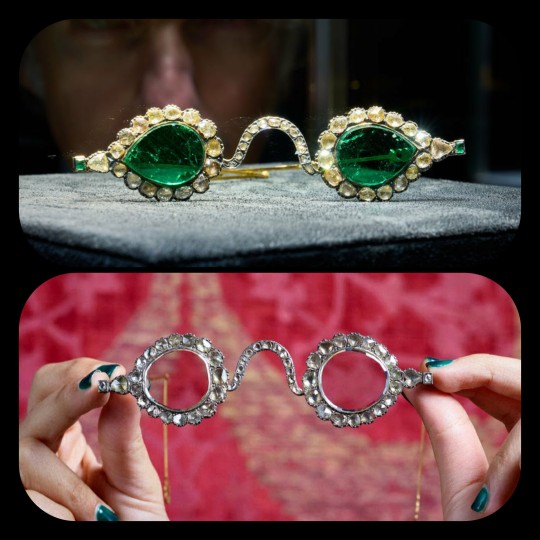
The Gate of Paradise and the Halo of Light were both kept in the collections of a wealthy Indian family until 1980, when they were sold to private collectors, before going on auction once again back in 2021. They were valued at about $2 million to $3.4 million per pair.
Sources & More Info:
Sotheby's: Mughal Spectacles
Architectural Digest of India: At Sotheby's auction, Mughal-era eyeglasses made of diamond and emerald create a stir
Only Natural Diamonds: Auspicious Sight & the Halqeh-e Nur Spectacles
The Royal Society Publishing: Cleaving the Halqeh-Ye Nur Diamonds
Gemological Institution of America: Two Antique Mughal Spectacles with Gemstone Lenses
Manuscript: From Satan's Crown to the Holy Grail: emeralds in myth, magic, and history
CNN: The $3.5 million Spectacles Said to Ward off Evil
BBC: Rare Mughal Era Spectacles to be Auctioned by Sotheby's
#history#archaeology#artifact#mughal#india#17th century#art#emerald#diamond#glasses#indian lore#islam#religion#mysticism#indian history#anthropology#spirituality#fashion
4K notes
·
View notes
Text
Listen if the study of ancient humans doesn’t make you at least a little bit emotional idk what to say.
I started crying today at the museum because they had reconstructed the shoes of Otzi the iceman.
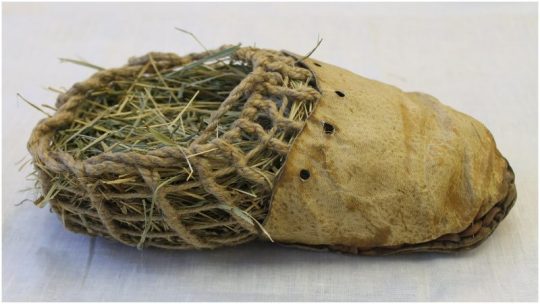
Either he or someone he knew who cared about him made these shoes out of grass and bear skin and twine and he was wearing them when he died over five thousand years ago.
And a Czech researcher and his students did reconstructions of these shoes and wore them to the same place where he died to test them out and they were like yep! These shoes are really cozy and comfy and didn’t give us blisters while hiking!
Is that not just the coolest shit ever????
#I couldn't be a paleontologist or anthropologist bc I would just be crying all the time#humans#otzi#archaeology#history#emily talks#shoes#now with alt text!
9K notes
·
View notes